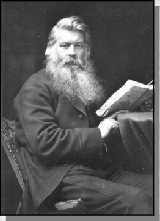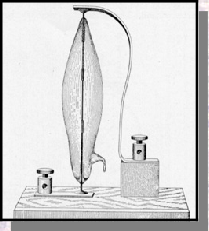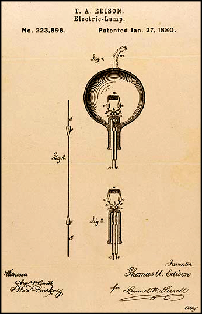



26th July 2008

Joseph Swan worked on developing a filament lamp before Thomas Edison and patented a design for an electric bulb. The patent however was ultimately acquired by Edison through his buying the company that owned the patent. Swan’s bulb was further developed and over the


Inventors & Inventions
IF IN DOUBT ASK !!!!
following 20 years considerable changes were seen. Swan’s original design had used a carbon filament and this was the route followed by Edison in his experimentation. It was in 1860 that Swan’s model was granted a patent and covered the feature that the filament was contained in a partial vacuum within a surrounding glass envelope. As there was insufficient Oxygen inside the


Meanwhile in America, Thomas Edison was working along similar lines
Edison’s patent for the Electric lamp was granted on January 27th 1880 ( #233898 ) and was essentially the same as Swan’s design. Swan had published scientific papers about his research with carbon filaments and it is most likely they were both working on similar ideas at the same time. However the patent dates prove who won the race ! Swan sued Edison and won and as a consequence of the legal decision was made a partner in a production company - This was the ‘Brush Electric Light Company’ In America Edison was also denied full rights to his patent of 1880 as similar work had already been done in America by a man named William Sawyer. Swan sold his shares to Edison in 1882 and the one that really made money from the whole series of events was the man who came second (or third if you consider William Sawyer !) in the race to ‘invent’ the light bulb.
Edison’s patent for the Electric lamp was granted on January 27th 1880 ( #233898 ) and was essentially the same as Swan’s design. Swan had published scientific papers about his research with carbon filaments and it is most likely they were both working on similar ideas at the same time. However the patent dates prove who won the race ! Swan sued Edison and won and as a consequence of the legal decision was made a partner in a production company -
Regarding the light bulb as an invention it was undoubtedly developed by a few individuals but the real foundation of the ‘electric light’ success lay in Edison’s development of supplying electricity by also creating a network to supply power for the bulbs. Edison certainly had a creative group of scientists and technicians around him at Menlo Park. And they had diverse talents too; see Edward Acheson - also featured in this section - for developing the abrasive, Carborundum, who worked for Edison in building generating stations in Europe for the rapidly spreading facility of electric lighting. If one were to single out one invention to define the greatest change seen in society – would it be the provision of an electric power supply and electric lighting ?
Whilst developing his carbon filament Swan hit upon a process for making thin filaments of cellulose for use in bulbs - a process later to be used for making artificial fibres used in textiles. He also created a major improvement to the printing papers used in photographic printing. A ‘Dry’ process - in that the sensitive materials were pre-prepared and dry at the time of use - the process essentially still used today. This was a significant step forward in what had, up till then, been a ‘wet process’ requiring a series of chemicals to be taken out whenever the camera was used for a photographic ‘trip’. He also went on to invent ‘bromide paper’ used for photographic printing. His patent for this was dated 1862 - the year he sold out to Edison - so maybe he needed the funds for this new venture and believed it to be more important
... What do you think ?
Read the facts and decide for yourself.
Whilst developing his carbon filament Swan hit upon a process for making thin filaments of cellulose for use in bulbs -
... What do you think ?
Read the facts and decide for yourself.


